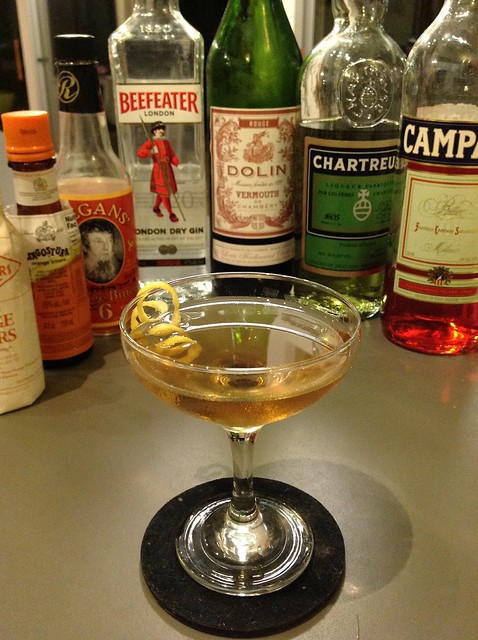Last year I visited the American Bar at the Savoy Hotel in London and tried one of Erik Lorincz‘s creations, the Norman Conquest. It was similar to a Manhattan with a mix of bourbon and calvados as the base spirit. I love calvados so the drink captured my interest.
At the American Bar they used Woodford Reserve bourbon and Martini Rosso vermouth; at home I recreated the cocktail with Buffalo Trace and Dolin rouge for a more assertive mix. My calvados is Daron.
Then I remembered that I had tried a similar Manhattan variation with apple brandy in the past, Sam Ross’ Grandfather. He calls for applejack but I used calvados. I made them side-by-side for comparison purposes. The differences are minor – the simple syrup and orange twist in Erik Lorincz’s version, the Peychaud’s bitters in Sam Ross’ version, calvados vs. applejack, rocks vs. up.  Continue reading
Continue reading




